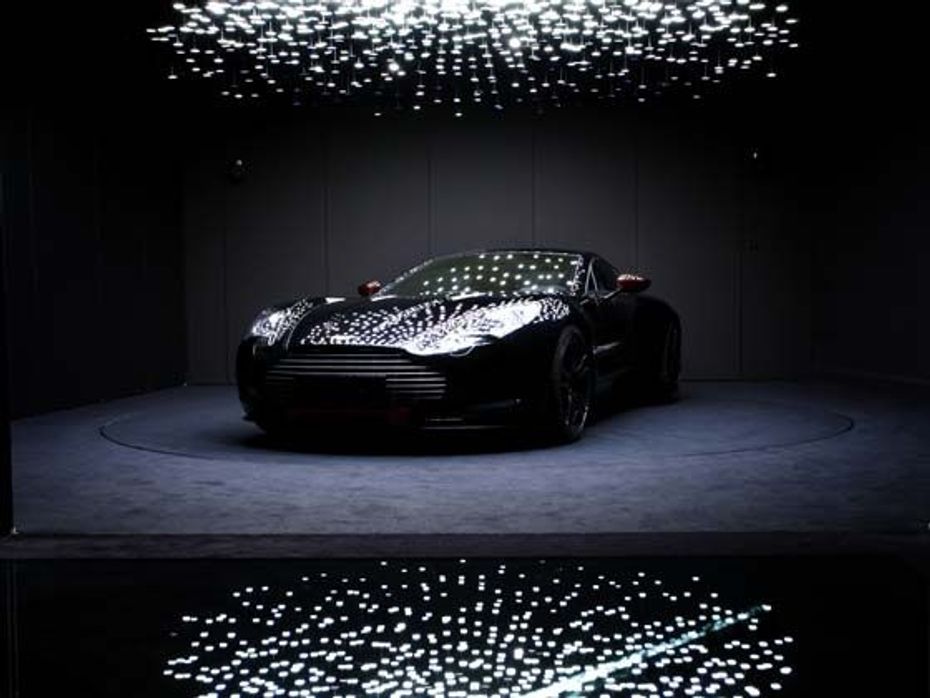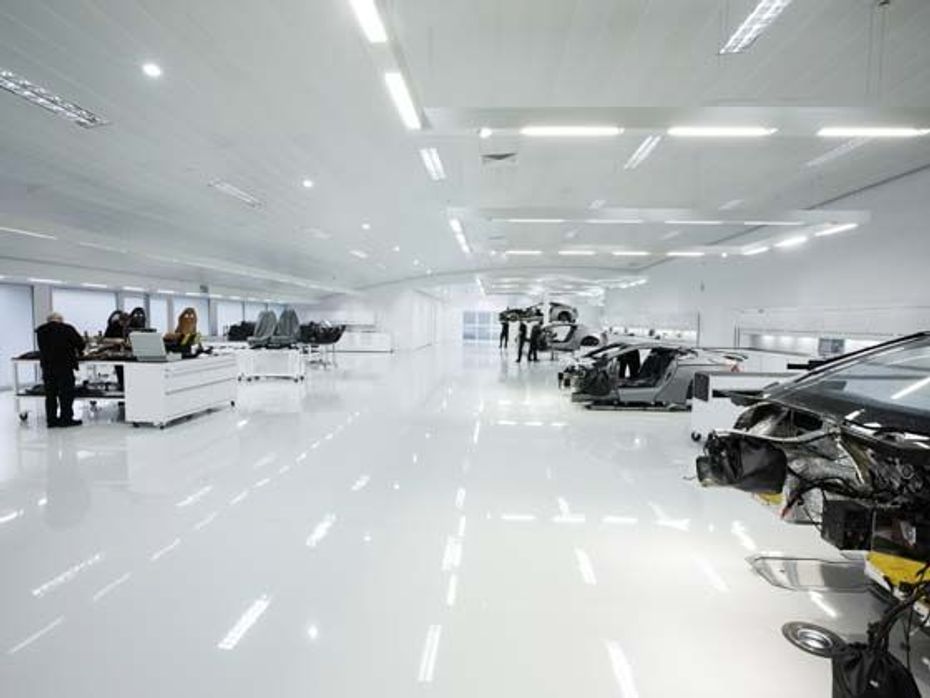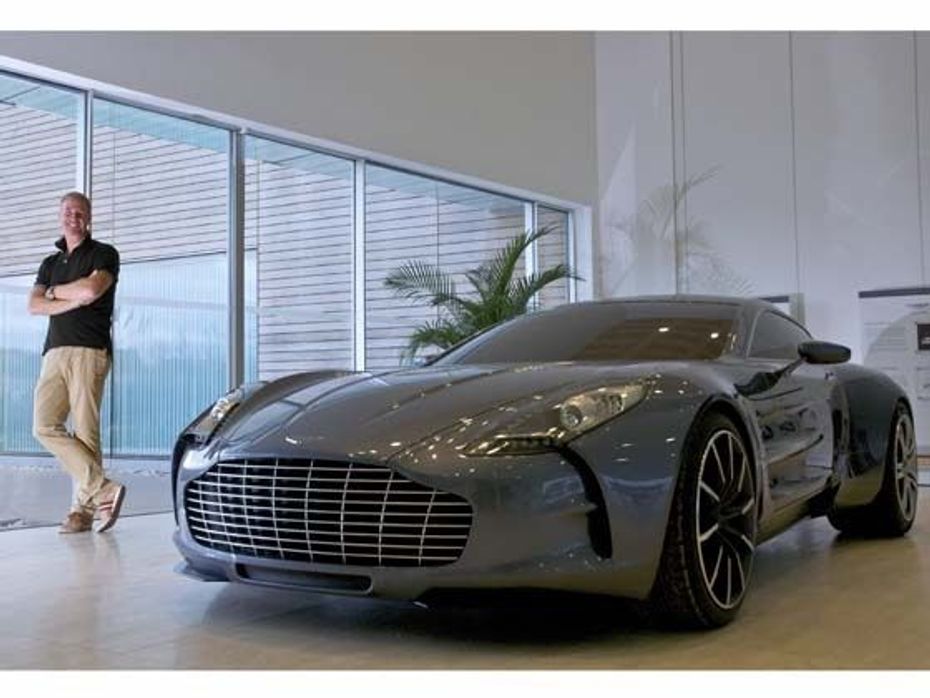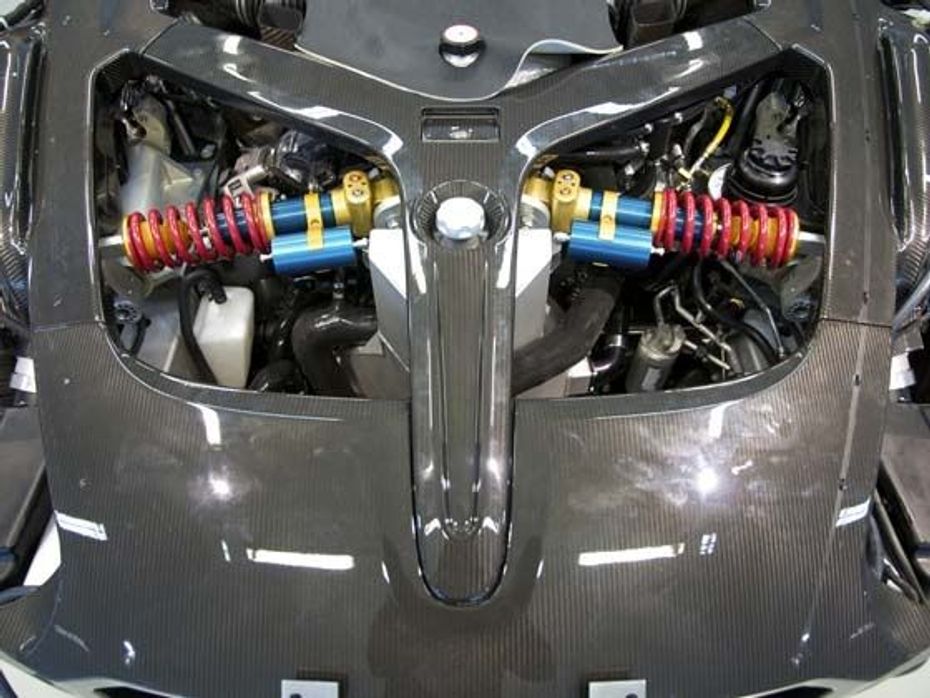
Renault Extends Standard Warranty On Kwid, Triber, And Kiger To 3...
- Dec 30, 2024
- Views : 30457


The room is pitch dark, but you can feel the presence of something powerful and elegant in the room, like an aura hanging in the air. Strains of strings leak out from the speakers, and the show begins. Rows of Philips LCD screens on top begin to shower waves of light over the curves of the car below, exposing its sinuous shape and graceful form. As the crescendo builds up, the car comes forth in its complete glory, and for the lack of a more apt adjective, it truly is glorious. One of the most expensive production automobiles on global streets, one of the most exclusive, and most certainly a complete emotive and evocative experience – enough to make the hair on your skin stand on its end, and you haven’t even started the engine yet. And that’s how the Aston Martin One-77 is presented to members of its elite club of 77 owners.
It hasn’t always been like this though. Like many British brands with decades of heritage, and subsequent labour troubles, Aston Martin has seen its share of ups and downs. From moving James Bond around to making barely 500 cars in 13 years during its worst time; from passing through the hands of nine owners to hogging the “Britain’s Coolest Brand” title for five times in six years – beating Apple on the way. So how does a small automotive player, one worth an annual churn of just 5,500 cars in an increasingly quantity-obsessed car atmosphere make it to this spot? The One-77, in many ways, is simultaneously the answer and the perfect showcase of how small can be transformed into exclusive and profitable, so long as it has the right and relevant values attached to it.

Look at it this way, and the psyche behind the genesis of the One-77 begins to appear. Making five and half thousand pieces of the very desirable Aston Martin range - which include the Vantage (V8 nimble and V12 psychotic), the GT trio of the DB9, Virage and DBS, and the sportscar-masquerading-as-a-four-door-saloon Rapide - was a “restricted” task for a company as obsessed with quality and exclusivity as Aston Martin. “It was clear that if you do 77 cars, you can do a lot of things that you cannot do for a 3000 or 5000 car run – much more freedom,” in the words of Dr. Ulrich Bez, CEO, Aston Martin, and the architect of the company’s resurgent era. The idea was to abandon these restrictions of numbers and budgets, and to create a car that was free of all these factors so it could reflect the unique Aston spirit of carmaking, but that came with its own set of structure to work within – a naturally aspirated engine, an Front-mid engine-rear drive layout, an appeal of a grand tourer, breathtaking style and high levels of engineering sophistication.

Call it freedom within a structure, whatever the analysis of the brief, it has been used to great effect chiefly by Aston’s design boss Marek Reichman. “If we could bottle the essence of Aston Martin – power, beauty, soul – as a three-dimensional expression, that really is what the One-77 is all about” he mentions emphatically in the Aston design studio. But the vision for the car was greater than just making a car which represented the pinnacle of design that this almost-century old brand could achieve. It had to be as much of a beautiful technical tour-de-force under its skin, as it had to be the epitome of hand-crafted design on the surface.

Multimatic Inc from Toronto was brought in to employ its competence with carbon fibre structures to make the CF tub that lies at the structural root of the One-77. Extensive use of CF on the body was employed - from the rear bulkhead to even the doors of the car, which have top-spec Bang & Olufsen speakers integrated into the carbon fibre structure – and as a result the weight of the car hovers at 1,630 kg. Even the torque tube which houses the carbon fibre propeller shaft was built in magnesium alloy to save weight, creating its own engineering and design challenges given the material’s inflammable nature. Beyond a lightness of being, and to stay true to the ‘piece of art’ brief, every single component, right from the almost sculptural dry sump oil reservoir to the billet machined aluminium suspension mounts, have been crafted to perfection. The One-77's rolling chassis itself is an automotive masterpiece. Lay handcrafted panels of aluminium on top of this, every three-dimensional contour manually wheel-worked to perfection, and the result is an unprecedented amalgamation of artistry, engineering and craftsmanship.

Powering the One-77 is Cosworth’s interpretation of Aston Martin’s V12 mill, in a state of tune extreme enough to suit the car’s purpose. Pumped up to displace 7.3-litres of fuel and compress it to a ratio of 10.9:1, the naturally aspirated engine creates 760PS of power and 750Nm of torque. One might see a lot 7s in there too, but the purpose was to go beyond numbers, and capture the true essence of Aston Martin as a driving machine. As a result, a dry sump lubrication was employed to allow the engine to sit as low as possible, and it was moved as further inside the front wheel axle as a conventional Front-mid engine, rear-drive layout would allow, for the benefit of sublime balance. In-board, independent double wishbone suspensions have been employed fore and aft, for near-race-car dynamics. It is still a GT though, in Aston tradition, made to go fast, yet dripping with panache and a sense of distinction.

So it’s a technical and artistic showcase for Aston Martin, but it also is a 10-crore rupee car (Rs 20 crore if you want to drive it in India). Wouldn’t it have been better to just make it a one-off to show off at motor expos? Or go in for an unlimited production run, sure to be fancied for a car that sets so many benchmarks? Why just, and exactly, 77? The answer lies in economics. Unlike other halo engineering showcases which are allowed to make losses for the company in lieu of gains in brand value, Aston Martin’s existence as a small, independent and focused carmaker does not allow it to do so. Every One-77 sold had to make a tangible profit, and 77 was the number where it stayed rare and exclusive enough to go down in history, but also brought the entire project on an even keel for the company. Of course, given the levels of customization possible, the exercise is strenuous - akin to making 77 one-offs in a way.

A certain customer wanted Marek to deck his car up to “make it look like a sunset”. But then for a car that possibly is one of the finest driving vehicles ever made (hearsay, since only customers have ever driven the car apart from the Aston Martin testers), is as much a study in aesthetics as it is a display of art, distils 98 years of a unique tradition of carmaking into one single set of wheels, and stands for 77 of the most desirable products money can buy on this planet - sure, they can make it look like a sunset.

Renault Extends Standard Warranty On Kwid, Triber, And Kiger To 3...

Hyundai Exter: Welcome To The New World Of Thrills And Technology

Hyundai Creta Level-2 ADAS Explained, Perfect For Indian Road...

Hyundai Exter: An Year Long Ownership Experience That Left Us Wanting...

2024 Toyota Camry Launched In India At Rs 48 Lakh; Now...

Kia Syros Unveiled Globally As The Most Premium Sub-4m SUV In India

Is The Kia Syros More Compelling Than The Best-selling Hyundai Creta?

New 2024 Honda Amaze Arrives In India At Rs 8 Lakh

Auto Expo 2025 - All You Want To Know About The Hottest Auto Show!

Mahindra BE 6 Launched: Price For The Top-spec Variant Is Out!
India's largest automotive community
 Kia Syros
Rs. 8.99 Lakh
Kia Syros
Rs. 8.99 Lakh
 Vayve Mobility Eva
Rs. 3.25 Lakh
Vayve Mobility Eva
Rs. 3.25 Lakh
 BMW X3
Rs. 75.80 Lakh
BMW X3
Rs. 75.80 Lakh
 Hyundai Creta Electric
Rs. 17.99 Lakh
Hyundai Creta Electric
Rs. 17.99 Lakh
 Lotus Emira
Rs. 3.22 Crore
Lotus Emira
Rs. 3.22 Crore